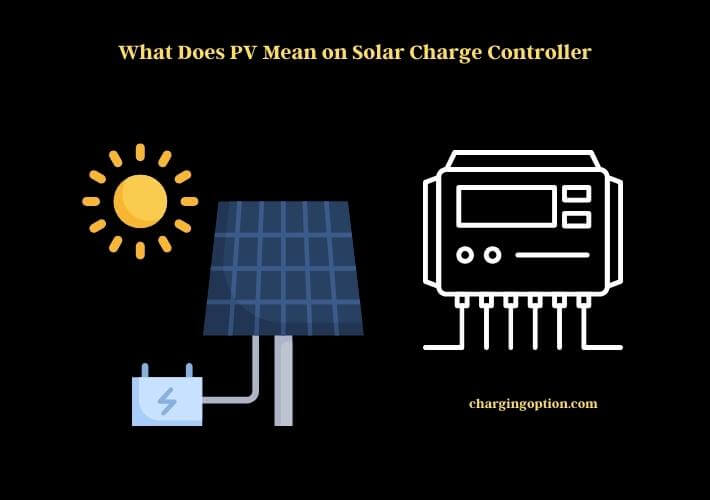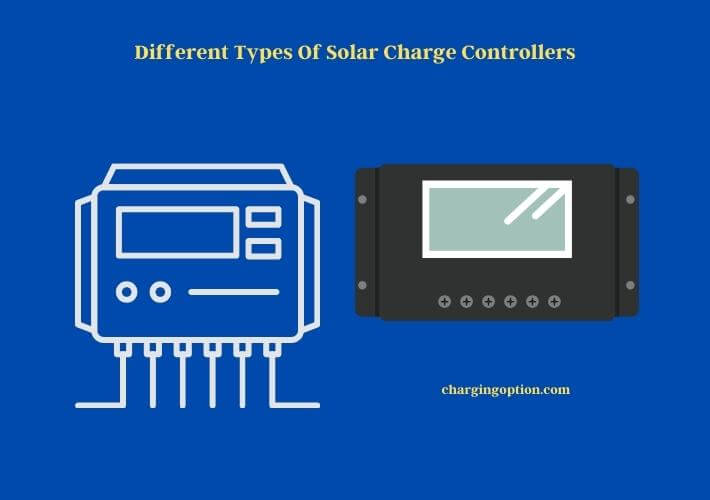PV stands for Photovoltaic. It refers to the conversion of sunlight into electricity using solar cells.
Solar charge controllers play a pivotal role in ensuring the longevity and efficiency of a solar power system. The primary function of these devices is to regulate the voltage and current coming from the solar panels, directing it to the batteries. The term “PV off setting” in a solar charge controller context indicates the voltage level at which the controller will disconnect or turn off the power from the solar panels to protect the batteries from overcharging.

The PV charge controller is essential in maintaining the health of the battery bank. Among the various types of solar charge controllers, the MPPT (Maximum Power Point Tracking) solar charge controller is renowned for its ability to optimize the match between the solar panels and the battery bank. The MPPT solar charge controller 12v is specifically designed for 12-volt systems, ensuring optimal performance and battery life.
Understanding the terminology associated with these devices can be beneficial. For instance, “PV input meaning” refers to the power input from the solar panels into the controller or inverter. Similarly, the “PV input on inverter” denotes the connection point where the solar panels’ power is fed into the inverter for conversion to AC power. Adjusting the solar charge controller settings correctly can make a significant difference in the system’s efficiency and lifespan.
The Basics of Solar Charge Controllers
Definition and Primary Purpose
Solar charge controllers are the unsung heroes of solar power systems. They’re like the referees in a football game, ensuring that everything runs smoothly and according to the rules. In this case, the rules involve the safe and efficient charging of your batteries. They keep an eye on the voltage and current coming from the solar panels, making sure the batteries get exactly what they need – no more, no less.
Role in a Solar Power System
Imagine a world where your batteries are exposed to the wild whims of unregulated solar power. It’s not a pretty sight. Batteries can be overcharged or drained, and their lifespan can be cut short. That’s where solar charge controllers step in, ensuring that batteries are charged in the most optimized way, thus prolonging their life and ensuring the overall efficiency of the solar power system.
PV: Breaking Down the Acronym
Origin and Meaning of Photovoltaic
PV stands for Photovoltaic – a fancy term that essentially means converting sunlight into electricity. It’s like having your personal mini power plant that harnesses the sun’s energy. Photovoltaic cells are the core components that make this magic happen, turning those glorious sunbeams into usable power.
The Science Behind Photovoltaic Cells
Photovoltaic cells are akin to the chefs in a kitchen, turning raw ingredients (sunlight) into a delightful dish (electricity). These cells absorb photons from the sunlight, leading to the generation of electrons and, voila, we have electricity! It’s a clean, green, renewable source of energy that’s taking the world by storm.
The Connection: How PV Relates to Solar Charge Controllers
The Role of PV in Energy Conversion
PV isn’t just a cool acronym; it’s the heart of the solar power system. Without it, we wouldn’t be able to convert the sun’s energy into electricity. In the context of solar charge controllers, PV ensures that the energy harvested from the sun is efficiently converted and safely directed to charge the batteries.
Ensuring Optimal Performance of Solar Panels
Think of PV like the conductor of an orchestra, ensuring each instrument (solar cell) performs at its peak, creating a symphony of energy conversion. It ensures that the solar panels are working efficiently, maximizing the amount of energy converted and stored, ready to be used whenever needed.
Different Types of Solar Charge Controllers

PWM (Pulse Width Modulation) Controllers
PWM controllers are like the classic cars of the solar world. They’re reliable, have been around for a while, and get the job done. They regulate the energy from the solar panels, ensuring that the batteries are charged at the right pace, not too fast, and not too slow.
MPPT (Maximum Power Point Tracking) Controllers
Now, if PWMs are classic cars, MPPTs are the sports cars – sleek, efficient, and fast. They not only regulate but also optimize the energy that’s fed to the batteries, ensuring that every ounce of sunlight is efficiently converted into power.
Comparing PWM and MPPT Controllers
| Feature | PWM Controllers | MPPT Controllers |
| Efficiency | Up to 75% | Up to 99% |
| Cost | Less Expensive | More Expensive |
| Flexibility | Limited | High |
| System Size | Small to Medium | Medium to Large |
PV Off Setting in Controllers
Definition and Its Significance
PV off setting might sound technical, but it’s just a safety net for your batteries. It’s like having a babysitter who ensures the kids (batteries) aren’t overindulging in sweets (power). It determines the voltage level at which the controller disconnects the power supply to the batteries, preventing overcharging.
Protecting Batteries from Overcharging
It’s all about balance. Just as you wouldn’t want to overwater a plant, you wouldn’t want to overcharge your batteries. PV off setting ensures that the batteries get just the right amount of energy. Too much can damage them, reducing their efficiency and lifespan.
PV Input: More Than Just a Term
Meaning and Importance of PV Input
PV input is like the inlet valve of a water tank, controlling how much water (in this case, energy) gets in. It refers to the power that’s fed from the solar panels into the controller or inverter, playing a crucial role in determining the system’s overall efficiency.
How PV Input Affects the Inverter
The inverter is like a translator, converting the DC power from the solar panels into AC power that our homes and appliances can use. The PV input ensures that the inverter gets the right amount of power to convert, ensuring that nothing goes to waste and everything runs smoothly.
Adjusting and Optimizing Controller Settings
Importance of Correct Settings
Getting the settings right on a solar charge controller is akin to tuning a musical instrument. It ensures that every note (or in this case, unit of energy) is perfect, leading to a harmonious performance. Correct settings ensure optimal performance, longevity, and efficiency of the entire solar power system.
Recommended Settings for Different Systems
| System Voltage | Max Solar Panel Voltage | Recommended PV Off Setting |
| 12V | 17-18V | 14V |
| 24V | 34-36V | 28V |
| 48V | 68-72V | 56V |
The Impact of PV on System Efficiency
How PV Enhances Energy Conversion
PV is like the secret sauce that takes a dish from good to great. In the world of solar energy, it enhances the conversion of sunlight into electricity, ensuring that every ray of sunshine is put to good use, powering homes and businesses efficiently.
Factors Influencing PV’s Effectiveness
But it’s not just about having PV; it’s also about optimizing it. Various factors, like the quality of solar panels, the type of charge controller, and environmental conditions, play a pivotal role in determining how effectively PV can convert and manage solar energy.
So there you have it, a journey through the world of PV in solar charge controllers. From the basics of what PV means and its role in energy conversion, to the nitty-gritty of PV off settings and inputs, and the impact of different types of controllers. It’s a world where science meets practicality, ensuring that the energy gifted to us by the sun is harnessed, managed, and utilized in the most efficient way possible. Every piece of the puzzle, from the PV cells to the controllers and inverters, plays a crucial role in this symphony of renewable energy.
